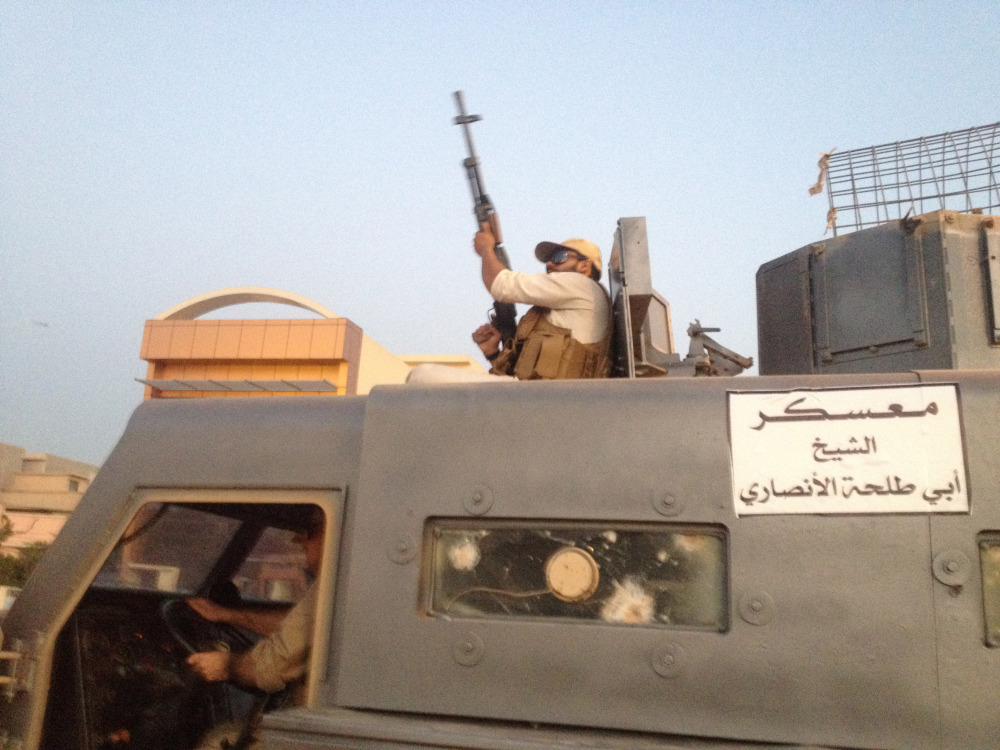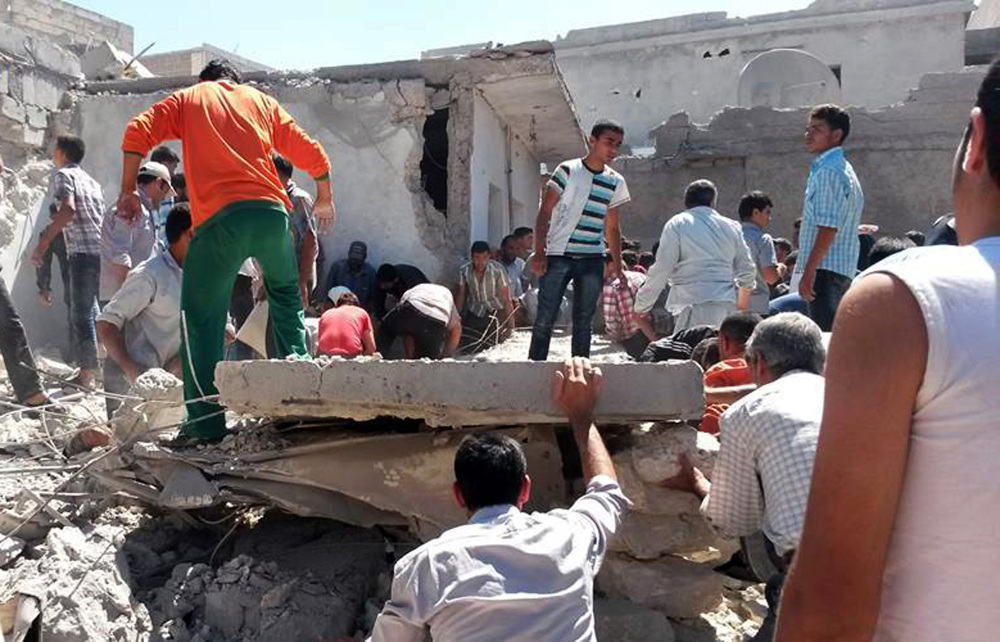ISTANBUL — After taking a hands-off approach toward the Islamic State of Iraq and the Levant for several months, the government of Syrian President Bashar Assad has reversed course and launched air attacks against the Sunni Muslim extremist group inside both Syria and Iraq.
The policy shift complicates an already tangled situation for the Obama administration by effectively aligning Assad, whose ouster Washington is demanding, with the United States in the fight against ISIL, which was once part of al-Qaida.
The attacks by Syrian jet aircraft are occurring as Iraq’s air space appears to be growing crowded. The Pentagon this week confirmed that U.S. aircraft and unmanned drones are flying dozens of daily sorties over Iraq, collecting intelligence to share with the government of beleaguered Iraqi Prime Minister Nouri al-Maliki. Moreover, news reports said that Iran, which backs both al-Maliki and Assad, also is flying drone missions over Iraq.
Who is coordinating the Syrian air attacks on ISIL targets inside Iraq is unclear. The state-run Syrian news agency denied that Syrian aircraft had bombed inside Iraq. But local Sunni tribes denounced the attacks, and White House spokesman Joshua Earnest said the administration has “no reason to dispute” the reports of Syrian airstrikes in Iraq.
U.S. DECLINES TO LAUNCH AIRSTRIKES
The United States so far has declined to launch airstrikes against ISIL, though al-Maliki has requested them.
The effectiveness of the Syrian strikes remains uncertain.
Opposition activists in Raqqa, the northern Syrian provincial capital that ISIL made its headquarters after capturing the city in April 2013, said that fierce regime bombing on Wednesday missed the extremists’ main bases and killed 30 civilians. Meanwhile, Syrian air attacks on Tuesday appeared to have done little to loosen ISIS control of the Iraqi border crossing of Qaim.
But Assad’s new focus on ISIS – which analysts say likely came at Iran’s behest – carries potentially important political advantages for the Syrian leader, including putting his Iraqi counterpart, al-Maliki, in his debt. As a result, al-Maliki may have to more closely coordinate the fight against ISIL with Syria.
Assad “is giving a hand to his ally, Maliki,” said Abu al-Walid, an opposition activist contacted by telephone in Raqqa province.
Furthermore, Assad could point to the airstrikes to press his argument that he’s indispensable in the fight against radical Islam and demand that the United States and its European allies reconsider their demand for his departure from power as part of a settlement to Syria’s civil war.
ASSAD’S SWITCH
Joining the drive against ISIL “could change his (Assad’s) relationship with the international community,” said Jessica D. Lewis, the research director of the Institute for the Study of War, a Washington research organization.
Other experts said that Assad’s switch may be nothing more than a reaction to the mounting threat the group poses in Syria now that ISIS has sent to Syria armored vehicles, artillery and other war materiel that it captured from the Shiite-dominated Iraqi army.
Until ISIS began its drive earlier this month through northern and western Iraq following the capture of the country’s second-largest city, Mosul, Assad’s forces generally had refrained from directly attacking the group’s main strongholds in eastern Syria, concentrating instead on recapturing highways and urban centers in western and southern Syria that had been held by other rebel groups.
The largely hands-off policy toward ISIL prompted the U.S.-backed opposition to charge that Assad secretly was aligned with ISIL. U.S. officials and other experts never have subscribed to that scenario. Instead, they contend that Assad ignored ISIL because its existence helped to substantiate his contention that Syria was being attacked by Islamic radicals and because its rivalry with other rebel groups weakened the entire rebel movement.
The first hint that the Assad government had reconsidered that approach came June 11, one day after ISIS seized control of Mosul, when anti-Assad activists reported that Syrian aircraft had bombed an ISIL column headed to Iraq near the Syrian city of Deir el-Zour. Three days later, Syrian aircraft hit ISIL headquarters in Raqqa city hall. The Syrian Air Force then staged 11 airstrikes on ISIS positions after ISIL seized al-Mohasan, a town in Deir el-Zour province that controls a road to the Iraqi border. Regime aircraft also hit ISIL bases in neighboring Hasaka province, which also borders Iraq.
On Tuesday, Syrian aircraft crossed the border and hit ISIS fighters who’d captured the Qaim border crossing and the nearby town of Ratba.
Copy the Story LinkSend questions/comments to the editors.




Success. Please wait for the page to reload. If the page does not reload within 5 seconds, please refresh the page.
Enter your email and password to access comments.
Hi, to comment on stories you must . This profile is in addition to your subscription and website login.
Already have a commenting profile? .
Invalid username/password.
Please check your email to confirm and complete your registration.
Only subscribers are eligible to post comments. Please subscribe or login first for digital access. Here’s why.
Use the form below to reset your password. When you've submitted your account email, we will send an email with a reset code.